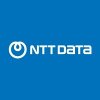Senior Network Engineer
100+ Senior Network Engineer Interview Questions and Answers

Asked in Baroda Global Shared Services

Q. What are the different types of network cables used in a network?
Different types of network cables include twisted pair, coaxial, fiber optic, and wireless.
Twisted pair cables are commonly used in Ethernet networks and come in two types: unshielded (UTP) and shielded (STP)
Coaxial cables are used in cable TV and broadband internet connections
Fiber optic cables use light to transmit data and are used for high-speed, long-distance connections
Wireless networks use radio waves to transmit data without the need for physical cables
Other types of ...read more

Asked in VOIS

Q. If your internet is not working, but your LAN/WAN connection is working properly, your IP is configured correctly, there are no DHCP or DNS issues, and VLAN is tagged properly, what could be the fault?
Possible issues include gateway configuration, firewall settings, or ISP problems affecting internet connectivity.
Check the default gateway configuration; it should point to the router's IP address.
Verify firewall settings; ensure that outbound traffic is not being blocked.
Test connectivity to the ISP; use tools like ping or traceroute to identify where the connection fails.
Inspect physical connections; ensure that the modem and router are powered on and connected properly.
Lo...read more
Senior Network Engineer Interview Questions and Answers for Freshers

Asked in Movate

Q. Explain the DORA process within the same network and across different networks.
The DORA process is used for IP address assignment in a network. It consists of four steps: Discover, Offer, Request, and Acknowledge.
Discover: The client sends a broadcast message to find available DHCP servers.
Offer: DHCP servers respond with an IP address lease offer.
Request: The client selects an IP address and sends a request to the DHCP server.
Acknowledge: The DHCP server acknowledges the request and assigns the IP address to the client.

Asked in VOIS

Q. You are working in an ISP and are at a customer's location. Their internet has been down for 3-4 hours. What steps will you take to resolve the issue?
Troubleshooting a prolonged internet outage involves systematic checks and communication with the customer.
1. Verify the issue: Check if the internet is down for all devices or just specific ones.
2. Check physical connections: Ensure all cables are securely connected and the modem/router is powered on.
3. Run diagnostics: Use tools to check for network outages or issues in the area.
4. Communicate with the customer: Keep them informed about the status and expected resolution ti...read more

Asked in Thomson Reuters

Q. How IPSec works? and what are the different packets which are exchanged during runnel formation?
IPSec is a protocol suite used to secure IP communications by authenticating and encrypting each IP packet.
IPSec operates at the network layer of the OSI model.
It provides data confidentiality, integrity, and authentication.
IPSec uses two main protocols: Authentication Header (AH) and Encapsulating Security Payload (ESP).
During tunnel formation, the following packets are exchanged: IKE Phase 1 Main Mode, IKE Phase 1 Aggressive Mode, IKE Phase 2 Quick Mode.

Asked in VOIS

Q. What is ospf and bgp its attributes
OSPF and BGP are routing protocols used in computer networks to determine the best path for data to travel.
OSPF (Open Shortest Path First) is an interior gateway protocol used to route IP packets within a single autonomous system. It uses link-state routing (LSR) and Dijkstra's algorithm to determine the shortest path between two nodes.
BGP (Border Gateway Protocol) is an exterior gateway protocol used to route data between different autonomous systems. It uses path-vector rou...read more
Senior Network Engineer Jobs




Asked in Baroda Global Shared Services

Q. What are the important network topologies?
The important topologies for networks include star, bus, ring, mesh, and hybrid.
Star topology: All devices are connected to a central hub or switch.
Bus topology: All devices are connected to a single cable.
Ring topology: Devices are connected in a circular manner.
Mesh topology: Each device is connected to every other device.
Hybrid topology: Combination of two or more topologies.
Asked in Anju Software

Q. Explain SNMP and how it is used in the real world with use cases.
SNMP is a protocol used for network management and monitoring.
SNMP allows network devices to be monitored and managed remotely
It uses a manager-agent model where the manager sends requests to agents for information
SNMP is used for monitoring network performance, identifying and resolving issues, and collecting data for analysis
Examples of SNMP use cases include monitoring bandwidth usage, tracking device availability, and managing network configurations
Share interview questions and help millions of jobseekers 🌟


Asked in Sterlite Power

Q. What is IP address and mac address, what are the difference between them?
IP address is a unique identifier assigned to a device on a network, while MAC address is a hardware address assigned to a network interface.
IP address is a logical address that identifies a device on a network, such as 192.168.1.1
MAC address is a physical address that identifies a network interface card, like 00:1A:2B:3C:4D:5E
IP address is used for routing data packets between devices on a network, while MAC address is used for communication within a local network
IP address ...read more

Asked in Renovision Automation Services

Q. Ospf lsa type & what is l2vpn, VRF, QOS, STP, RD&RT, BPDU GUARD, static route ad value, BGP path attribute
OSPF LSA types include router LSA, network LSA, summary LSA, and ASBR summary LSA. L2VPN, VRF, QoS, STP, RD&RT, BPDU guard, static route AD value, and BGP path attributes are all important networking concepts.
OSPF LSA types: router LSA, network LSA, summary LSA, ASBR summary LSA
L2VPN: Layer 2 Virtual Private Network for connecting multiple sites in a single bridged domain
VRF: Virtual Routing and Forwarding for creating multiple routing instances on a single router
QoS: Quality...read more

Asked in iOPEX Technologies

Q. How dns work and what are the different records in dns?
DNS (Domain Name System) is a system that translates domain names to IP addresses to locate resources on the internet.
DNS works by translating human-readable domain names (like google.com) into IP addresses (like 172.217.3.206).
Different types of DNS records include A records (for IPv4 addresses), AAAA records (for IPv6 addresses), CNAME records (for aliasing one domain to another), MX records (for mail servers), and TXT records (for arbitrary text data).
DNS operates through ...read more
Asked in Schweickert

Q. How does VPC work, and how does traffic flow from a VPC to a non-VPC environment?
VPC is a virtual private cloud that allows you to create a private network in the cloud. Traffic can flow from VPC to non-VPC environment via VPN or Direct Connect.
VPC allows you to create a private network in the cloud
VPC can be connected to on-premises data centers via VPN or Direct Connect
Traffic can flow from VPC to non-VPC environment via VPN or Direct Connect

Asked in Tech Mahindra

Q. In ACI, how does the VMM integration approach work, and why is it required?
VMM integration in ACI allows seamless communication between virtual and physical networks
VMM integration in ACI enables automation and orchestration of network policies across virtual and physical environments
It helps in maintaining consistency and reducing errors in network configurations
Examples of VMMs include VMware vSphere, Microsoft Hyper-V, and KVM
VMM integration is required to ensure efficient communication and management of virtualized workloads in the data center

Asked in Provana

Q. What is routing protocols and explain them in brief. What is the OSI Layer and explain each layer What is VLan and explain them.
Routing protocols determine how data is forwarded in networks. OSI layers define network communication standards. VLANs segment networks for efficiency.
Routing protocols include RIP, OSPF, and BGP, which help in determining the best path for data.
The OSI model has 7 layers: Physical, Data Link, Network, Transport, Session, Presentation, and Application.
VLANs (Virtual Local Area Networks) allow network segmentation, improving performance and security by isolating traffic.

Asked in Futures First info Services

Q. What is Adaptive Security Appliance (ASA), and how does it work? Can you explain the packet flow in an ASA?
Adaptive Security Appliance (ASA) is a network security device that combines firewall, VPN, and intrusion prevention capabilities.
ASA operates at multiple layers of the OSI model, primarily Layer 3 (Network) and Layer 4 (Transport).
It uses stateful packet inspection to track the state of active connections and determine which packets to allow or deny.
The packet flow in an ASA involves several stages: ingress, inspection, and egress.
During ingress, packets are received and che...read more

Asked in IBM

Q. What are the different types of networks?
There are several types of networks, including LAN, WAN, MAN, WLAN, PAN, SAN, and CAN.
Local Area Network (LAN) - a network that covers a small geographical area, such as an office building.
Wide Area Network (WAN) - a network that spans a large geographical area, such as connecting multiple offices across different cities.
Metropolitan Area Network (MAN) - a network that covers a larger area than a LAN but smaller than a WAN, typically within a city.
Wireless Local Area Network ...read more

Asked in Wipro

Q. What needs to be checked if OSPF neighborship is not forming?
Check OSPF configuration, network connectivity, router IDs, subnet mismatches, authentication, and hello/dead timers.
Verify OSPF configuration on both routers
Check network connectivity between routers
Ensure router IDs are unique
Check for subnet mismatches
Verify authentication settings
Check hello and dead timers

Asked in Sterlite Power

Q. What is the process of configuring a new Juniper switch?
Configuring a new Juniper switch involves connecting to the switch, accessing the CLI, configuring basic settings, and setting up VLANs and interfaces.
Connect to the switch using a console cable or SSH.
Access the CLI by entering the default username and password.
Configure basic settings such as hostname, IP address, and management access.
Set up VLANs by creating VLAN interfaces and assigning ports to VLANs.
Configure interfaces by setting IP addresses, enabling protocols like ...read more

Asked in Baroda Global Shared Services

Q. What are the different ways to exchange data?
Data can be exchanged through various methods such as wired and wireless communication, file transfer protocols, messaging services, and cloud storage.
Wired communication: Ethernet cables, fiber optic cables
Wireless communication: Wi-Fi, Bluetooth, cellular networks
File transfer protocols: FTP, SFTP, TFTP
Messaging services: Email, instant messaging
Cloud storage: Dropbox, Google Drive

Asked in Tech Mahindra

Q. What is the Internet, and can you provide a detailed explanation?
The Internet is a global network of interconnected computers that allows communication and sharing of information.
The Internet is a network of networks, connecting millions of computers worldwide.
It enables communication through various protocols like TCP/IP.
The Internet allows access to a vast amount of information and resources.
It facilitates services like email, web browsing, online gaming, and file sharing.
Examples of Internet services include websites like Google, social...read more

Asked in Network Techlab

Q. Are you capable of troubleshooting Aruba controllers, switches, and access points?
Yes, I am proficient in troubleshooting Aruba controllers, switches, and access points effectively.
Utilize Aruba's AirWave for monitoring and managing network devices.
Diagnose connectivity issues by checking VLAN configurations on switches.
Use CLI commands to troubleshoot access point connectivity, such as 'show ap debug' for detailed logs.
Implement firmware updates on controllers to resolve known bugs and improve performance.
Analyze network traffic using Aruba's Packet Captu...read more

Asked in Network Techlab

Q. How does the Webex device work, and what is the process for its deployment?
Webex devices facilitate video conferencing and collaboration, integrating with cloud services for seamless communication.
Webex devices connect to the Webex cloud for video conferencing and collaboration.
Deployment involves network configuration, device registration, and user setup.
Example devices include Webex Room Kit and Webex Desk Pro.
Devices can be managed through the Webex Control Hub for updates and settings.

Asked in Network Techlab

Q. What are the deployment options for the Cisco 9800 Wireless Controller?
Cisco 9800 Wireless Controller offers flexible deployment options for scalable and resilient wireless networks.
Physical Appliance: Deployed as a dedicated hardware device in the network.
Virtual Appliance: Can be deployed on VMware or KVM environments for flexibility.
Cloud Deployment: Managed through Cisco's cloud services for centralized control.
High Availability: Supports active/standby configurations for redundancy.

Asked in Network Techlab

Q. What is a firewall, and how does packet flow through it?
A firewall is a network security device that monitors and controls incoming and outgoing traffic based on predetermined security rules.
Firewalls can be hardware-based, software-based, or a combination of both.
They filter traffic based on IP addresses, ports, and protocols.
Example: A firewall may block all incoming traffic on port 80 (HTTP) except from a specific IP address.
Firewalls can operate at different layers of the OSI model, such as packet filtering (Layer 3) or applic...read more

Asked in Network Techlab

Q. What type of wireless site surveys have you conducted using the Ekahau tool?
I have conducted various wireless site surveys using Ekahau, including predictive, active, and passive surveys.
Predictive Surveys: Used Ekahau to simulate coverage and capacity before deployment, ensuring optimal placement of access points.
Active Surveys: Conducted real-time measurements in a live environment to assess performance and identify dead zones.
Passive Surveys: Collected data on existing wireless networks to analyze signal strength and interference without actively ...read more

Asked in Futures First info Services

Q. How does a site-to-site VPN work, and what are the troubleshooting steps for Phase 1 and Phase 2?
A site-to-site VPN connects two networks securely over the internet using encryption and tunneling protocols.
Phase 1 establishes a secure channel using IKE (Internet Key Exchange).
Phase 1 involves authentication methods like pre-shared keys or certificates.
Phase 2 negotiates the IPsec security associations for data encryption.
Common troubleshooting for Phase 1 includes checking firewall rules and IKE settings.
For Phase 2, verify the IPsec policies and ensure the correct traff...read more

Asked in Tech Mahindra

Q. What is a server, and can you provide a detailed explanation?
A server is a central computer in a network that provides services and resources to other computers.
A server is a powerful computer that is designed to handle multiple requests from client computers.
It stores and manages data, applications, and services that can be accessed by other computers in the network.
Servers can be dedicated to specific tasks such as file storage, email, web hosting, database management, etc.
They often have high processing power, large storage capacity...read more

Asked in Tech Mahindra

Q. In OSPF, what is OSPF priority and what role does it play?
OSPF priority is a value used to determine the designated router and backup designated router in an OSPF network.
OSPF priority is a value assigned to each router interface in OSPF.
The router with the highest priority on a network segment becomes the designated router (DR).
The router with the second-highest priority becomes the backup designated router (BDR).
If priorities are tied, the router with the highest router ID becomes the DR.
Priority values range from 0 to 255, with 0...read more

Asked in Agrostar

Q. Hsrp details with vesrion 1 and 2. OSI model explain in a brief with port number and application used at each layer
Explanation of HSRP versions 1 and 2 and OSI model with port numbers and applications at each layer.
HSRP version 1 uses multicast address 224.0.0.2 and has a default priority of 100.
HSRP version 2 uses multicast address 224.0.0.102 and has a default priority of 120.
OSI model has 7 layers: Physical, Data Link, Network, Transport, Session, Presentation, and Application.
Physical layer uses port numbers 1-1023 and includes devices such as cables and hubs.
Transport layer uses port...read more

Asked in Cox Communications

Q. Explain how you can use automation in your current position.
Automation streamlines network management, enhances efficiency, and reduces human error in network operations.
Implementing scripts for routine tasks like configuration backups and updates, e.g., using Python with Netmiko.
Utilizing network monitoring tools like Nagios or Zabbix to automate alerts for performance issues.
Deploying Ansible for configuration management to ensure consistent device settings across the network.
Automating network device provisioning with tools like Ci...read more
Interview Questions of Similar Designations
Interview Experiences of Popular Companies








Reviews
Interviews
Salaries
Users

















